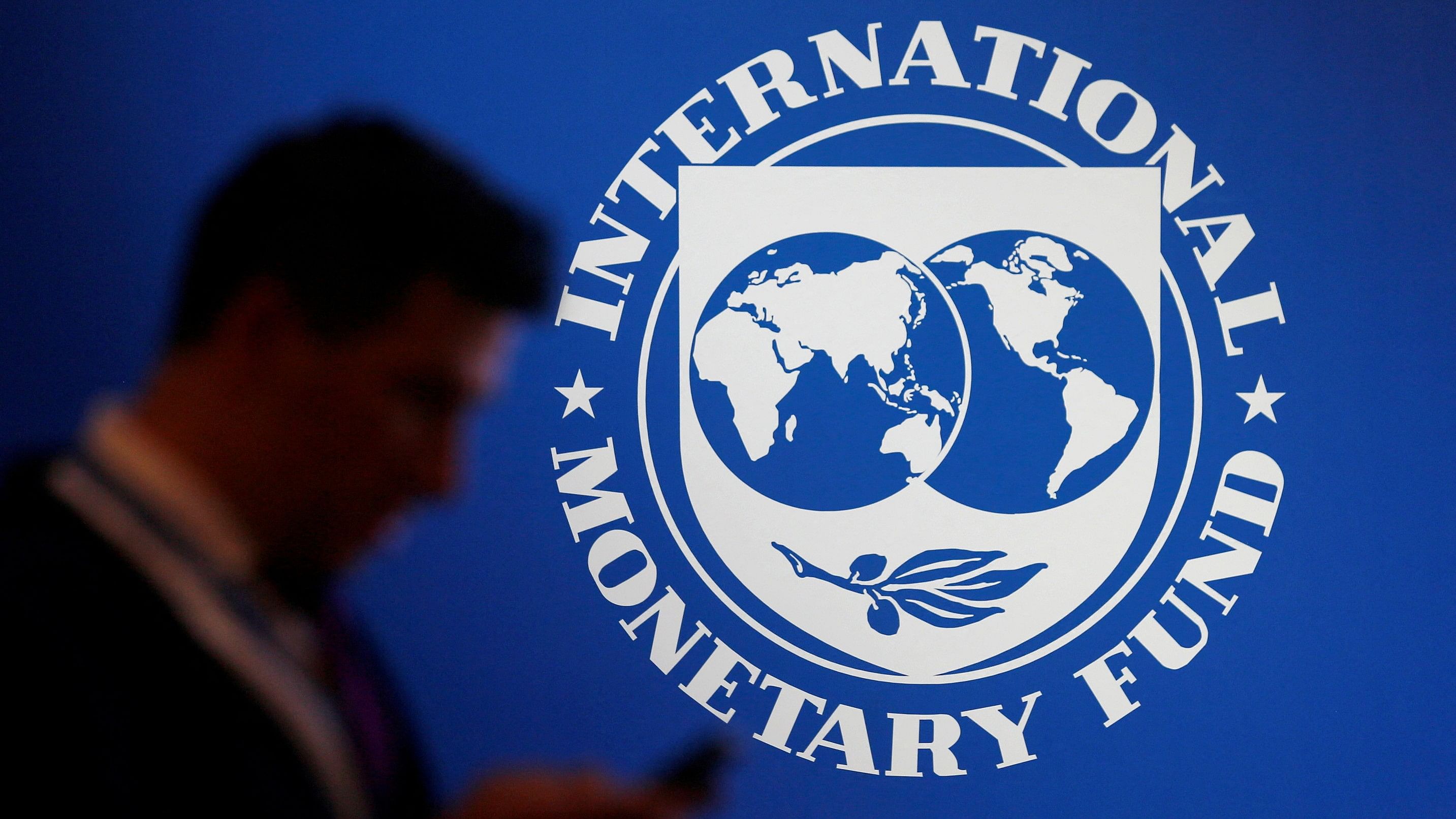
A participant stands near a logo of IMF at the International Monetary Fund
Credit: Reuters Photo
Bengaluru: The International Monetary Fund, in the latest update to its World Economic Outlook, kept its financial years 2024-25 and 2025-26 GDP growth outlook for India unchanged at 7 per cent and 6.5 per cent respectively, saying that the post-pandemic pent-up demand had run its course and the economy was finding its footing.
These forecasts would still retain India as one of the world’s fastest growing major economies.
In its report on Tuesday, the IMF said that the global battle against inflation is almost won, with worldwide inflation expected to reach 3.5 per cent by the end of 2025, from 9.4 per cent in the third quarter of 2022, and below pre-pandemic levels.
“Despite a sharp and synchronized tightening of monetary policy around the world, the global economy has remained unusually resilient throughout the disinflationary process, avoiding a global recession,” Pierre-Olivier Gourinchas, the IMF’s Economic Counsellor, said.
In his preface to the WEO report, Gourinchas said that global growth is projected to hold steady at 3.2%in 2024 and 2025, even though a few countries, especially low-income developing countries, have seen sizable downside growth revisions, often as a result of increased conflicts.
While the global decline in inflation is a major milestone, downside risks are rising and now dominate the outlook, including an escalation in regional conflicts, monetary policy remaining tight for too long, a possible resurgence of financial market volatility with adverse effects on sovereign debt markets, a deeper growth slowdown in China, and the continued ratcheting up of protectionist policies, he said.
On India’s prospects, the multilateral institution said that the pent-up demand accumulated during the pandemic has been exhausted, as the economy reconnects with its potential.
However, the IMF also said that India needs to undertake further structural reforms, especially in labour. It acknowledged that reforming labour laws in India is a long process, requiring consent of the centre as well as the state governments.
India’s headline retail inflation surged to a nine-month high of 5.49 per cent in September after remaining below the RBI’s median target of 4 per cent in July and August. This prompted Reserve Bank of India Governor Shaktikanta Das to indicate that central bank is unlikely to ease monetary policy in the upcoming December bi-monthly meeting as it could be “premature” and “very risky”.
This comes even as global central banks have started cutting rates.
“The return of inflation to near central bank targets paves the way for a much-needed policy triple pivot. The first—on monetary policy—has started. Since June, major central banks in advanced economies have started to cut their policy rates, moving their policy stance toward neutral,” Gourinchas said in the IMF report on Tuesday.
He said that this will support activity at a time when many advanced economies’ labour markets are showing signs of weakness, with rising unemployment rates. It will also help ward off the downside risks.